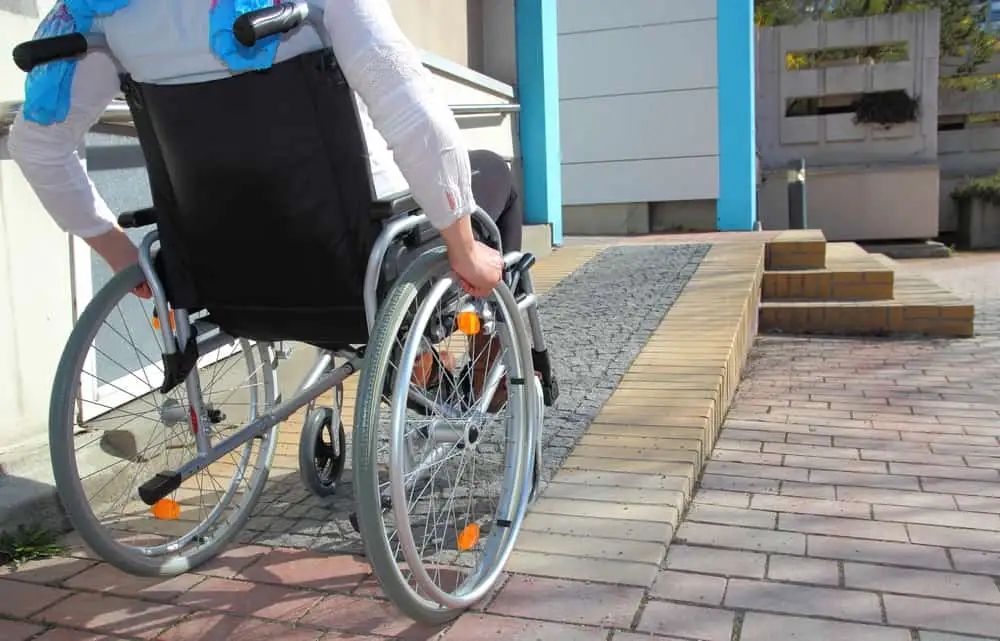Welcome to Basics of Post Accident Physical Therapy, the Magazine Guide to Post-Accident Physical Therapy Basics for Chiropractic Wellness.
This comprehensive resource aims to enhance your understanding of post-accident physical therapy.
After an accident, physical therapy plays a crucial role in the recovery process by restoring mobility, strength, and functionality.
This article explores the benefits, common treatment modalities, and how post-accident physical therapy complements chiropractic wellness.
Whether you are a healthcare professional, a patient, or seeking knowledge on this subject, this guide provides valuable insights.
Key Takeaways
- Post-accident physical therapy plays a crucial role in promoting optimal recovery and rehabilitation.
- Common injuries requiring post-accident physical therapy include car accidents, sports injuries, workplace accidents, and falls.
- Post-accident physical therapy provides pain relief, improves mobility and range of motion, and reduces the risk of future accidents.
- When choosing a post-accident physical therapy provider, consider their expertise, location, approach to treatment, and track record of successful outcomes.
Importance of Post-Accident Physical Therapy
Post-accident physical therapy plays a crucial role in promoting optimal recovery and rehabilitation following an injury. It is an essential component of the healing process, helping individuals regain strength, mobility, and function after an accident. Physical therapy focuses on restoring and improving physical abilities, reducing pain, and preventing further injury.
One of the key reasons why post-accident physical therapy is important is because it helps prevent long-term complications. By addressing the injury early on and implementing appropriate treatment plans, physical therapists can help individuals avoid chronic pain, muscle weakness, and joint stiffness that may arise if the injury is left untreated. Additionally, physical therapy can also help individuals regain their independence and improve their quality of life by enhancing their ability to perform daily activities.
Post-accident physical therapy provides a supportive environment where individuals can receive personalized care and guidance from skilled professionals. It offers a sense of belonging and reassurance, knowing that there are experts who understand their needs and are dedicated to helping them recover. Through a combination of exercises, manual therapy, and education, physical therapists strive to empower individuals to take an active role in their recovery journey.
Common Injuries Requiring Post-Accident Physical Therapy
Common injuries that often require post-accident physical therapy include those resulting from car accidents, sports injuries, workplace accidents, and falls. These types of accidents can lead to a range of injuries, from minor sprains and strains to more severe fractures, dislocations, and soft tissue damage.
Car accidents, for example, can cause whiplash, back injuries, and broken bones. Sports injuries often involve strains, sprains, and ligament tears. Workplace accidents can result in repetitive strain injuries, fractures, and muscle strains. Falls can lead to head injuries, fractures, and sprains.

Post-accident physical therapy is crucial for these injuries as it helps to reduce pain, restore function, and improve overall mobility and strength. Physical therapists work closely with patients to develop personalized treatment plans that address their specific injury and help them regain optimal physical health and wellness.
Benefits of Post-Accident Physical Therapy for Chiropractic Wellness
Post-accident physical therapy provides numerous benefits for chiropractic wellness.
After an accident, it is common for individuals to experience pain, limited mobility, and overall decreased quality of life. Physical therapy aims to address these issues by focusing on the restoration of function and pain management.
By undergoing post-accident physical therapy, individuals can expect to experience a wide range of benefits.
One of the main benefits is pain relief. Physical therapy techniques such as manual therapy, therapeutic exercises, and modalities like heat or cold therapy can help alleviate pain and discomfort. Additionally, physical therapy can improve mobility and range of motion, allowing individuals to regain their independence and perform daily activities with ease.
Post-accident physical therapy also plays a crucial role in preventing further injuries. Through targeted exercises and strengthening programs, physical therapists can help individuals build strength, improve balance, and enhance coordination, reducing the risk of future accidents.
Furthermore, physical therapy promotes overall wellness and improves the body’s ability to heal itself. By addressing the root cause of the problem and providing tailored treatment plans, physical therapists empower individuals to take an active role in their recovery and long-term well-being.
Understanding the Basics of Post-Accident Physical Therapy
To fully comprehend the fundamentals of post-accident physical therapy, it is essential to gain a comprehensive understanding of its key components and principles. Post-accident physical therapy is a specialized form of rehabilitation that aims to restore function and improve mobility following an accident or injury.
Here are three key components to consider:
- Assessment and Evaluation: A thorough assessment is conducted by a physical therapist to determine the extent of the injuries and develop an individualized treatment plan. This may involve evaluating range of motion, strength, flexibility, and functional abilities.
- Treatment Techniques: Physical therapy treatments may include a combination of manual therapy, therapeutic exercises, modalities (such as heat or cold therapy), and assistive devices. These techniques are designed to reduce pain, improve mobility, and promote healing.
- Rehabilitation and Education: Post-accident physical therapy not only focuses on physical recovery but also educates patients about injury prevention, self-care strategies, and proper body mechanics. This empowers individuals to actively participate in their own healing process and prevent future injuries.
How to Choose the Right Post-Accident Physical Therapy Provider
When selecting a post-accident physical therapy provider, it is crucial to consider several factors that contribute to the overall quality of care and treatment outcomes.
The first important factor to consider is the provider’s expertise and experience in dealing with post-accident injuries. Look for a provider who specializes in treating patients with similar injuries to yours and has a proven track record of successful outcomes.
It is also important to consider the location and accessibility of the provider’s clinic. Ideally, you want a provider who is conveniently located and easily accessible, especially if you have mobility issues after the accident.
Additionally, consider the provider’s approach to treatment. Look for a provider who takes a holistic and personalized approach, considering your unique needs and goals for recovery.
Frequently Asked Questions
How Long Does Post-Accident Physical Therapy Typically Last?
Post-accident physical therapy typically varies in duration depending on the severity of the injuries sustained and the individual’s response to treatment.
While there is no fixed timeline, it is common for post-accident physical therapy to last anywhere from a few weeks to several months.
The goal of this therapy is to restore function, reduce pain, and improve overall quality of life.
It is important to consult with a healthcare professional to determine the appropriate duration of post-accident physical therapy for each individual case.
Can Post-Accident Physical Therapy Help With Chronic Pain?
Post-accident physical therapy can be effective in helping with chronic pain. By focusing on strengthening the affected areas, improving flexibility, and reducing inflammation, physical therapy can help alleviate chronic pain symptoms.
Additionally, physical therapists can provide guidance on proper posture and body mechanics, which can prevent further pain and injury.
It’s important to consult with a healthcare professional to determine the best course of treatment for your specific condition.
Are There Any Potential Risks or Side Effects of Post-Accident Physical Therapy?
There can be potential risks and side effects associated with post-accident physical therapy. While it is generally considered safe and beneficial, there are certain factors that may increase the risk of complications.
These can include underlying health conditions, improper technique, overexertion, or pushing too hard during the rehabilitation process.
It is important for patients to communicate any concerns or discomfort to their therapist, as well as follow their guidance and recommendations to minimize the risk of adverse effects.
What Types of Exercises Are Typically Included in Post-Accident Physical Therapy?
Typically, post-accident physical therapy includes a variety of exercises designed to address the specific needs of the individual. These exercises may focus on improving strength, flexibility, range of motion, and overall function.
Common exercises may include stretching, strengthening exercises using resistance bands or weights, balance and coordination exercises, and cardiovascular exercises.
The specific types of exercises prescribed will depend on the nature and severity of the injuries sustained in the accident, as well as the individual’s overall health and fitness level.
Can Post-Accident Physical Therapy Help With Emotional and Psychological Recovery After an Accident?
Post-accident physical therapy can indeed help with emotional and psychological recovery after an accident.
The physical and emotional trauma experienced during an accident can have a significant impact on a person’s mental well-being.
Post-accident physical therapy not only focuses on physical rehabilitation but also addresses the mental and emotional aspects of recovery.
Therapists use various techniques such as counseling, relaxation techniques, and stress management strategies to assist patients in coping with the emotional aftermath of an accident.
This holistic approach to treatment can greatly contribute to a patient’s overall recovery and well-being.
Conclusion
In conclusion, post-accident physical therapy is an essential component of the recovery process after an accident. It helps individuals regain mobility, strength, and functionality while reducing pain and preventing long-term complications.
By understanding the importance of post-accident physical therapy and its role in promoting overall well-being, individuals can make informed decisions about their healthcare journey.
Choosing the right post-accident physical therapy provider is crucial for receiving effective and personalized care. This comprehensive guide serves as a reliable resource for healthcare professionals, patients, and anyone seeking knowledge on this subject.
You May Also Like:




